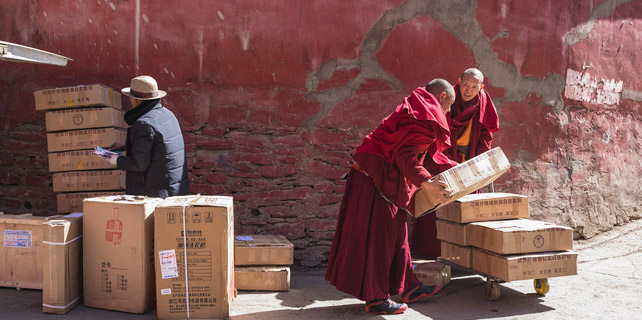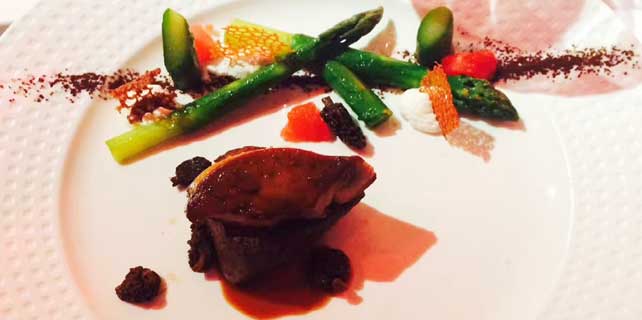Agricultural reform sows seed of hope for Chinese farmers
BEIJING - Tractors, plows, combine harvesters, now that spring has arrived, the machinery in Fu Haiwei's rural cooperative is ready for this year's farming.
The national cooperative is in Dongguan township, Northeast China's Heilongjiang province, and boasted more than 2,000 hectares of farmland in its heyday, with regular corn the stable crop.
But last year, Fu switched from growing regular corn to "fruit corn."
"Traditional corn had been experiencing a surplus crisis," Fu said. "But preferential government purchase policies for regular corn are decreasing due to mounting inventory pressure, and it is not wise to grow more."
China has been pushing agricultural reform since 2016, urging farmers to adjust the mix of their crops to stop blind expansion and focus on sustainable development, particularly in the corn industry.
This week, authorities with the National Development and Reform Commission said that China would continue to conduct agricultural reform by letting the market play a decisive role in the pricing of corn and soy in the China's northeast provinces and northern Inner Mongolia autonomous region, the country's major crop areas.
This has given those who have adjusted the mix of what they grow, like Fu, hopes of a better profit.
"I grow more 'fresh corn' and less regular corn these days," Fu said.
Last year, Fu's cooperative grew more than 200 hectares of fresh corn, also known as fruit corn, whose special flavor and delicate texture makes it more popular and expensive than regular corn. He also grew more than 200 hectares of silage corn, mainly as fodder.
"Each hectare of silage corn and fresh corn generated 1,500 yuan ($218) and 9,000 yuan more than regular corn [respectively]," Fu said. "I have already inked a deal with a company to provide 667 hectares of fresh corn this year."
Heilongjiang, China's biggest production base for crops, plans to reduce 666,667 hectares of regular corn and replace it with fresh corn and vegetables this year.
"Growing regular corn might have guaranteed good profits in the past because however much you grew, the government would purchase it at high prices," Fu said. "But now it is a different story."
The regular corn industry has been experiencing a surplus crisis after years of preferential government policies caused rapid expansion and excessive corn supply.
China began buying corn for state reserves in 2008 to protect local farmers from the global financial crisis. For years, the policy kept corn prices stable and high. However, years of good harvest and rising corn imports have generated a huge corn inventory, while market demand is stagnant.
Realizing the rising corn supply was a problem, the government launched reforms. Authorities announced plans to slash corn production in 2016 and partly remove favorable policies, which caused corn prices to tumble.
Under such circumstances, farmer Li Shuai abandoned growing corn this year and turned to an alternative crop: herbal medicine.
Li comes from Inner Mongolia's Naiman Banner, a large corn farming area. It produces more than 1.5 billion kilograms every year.
Two years ago, he grew more than 13 hectares of regular corn, but tumbling prices saw him suffer big losses.
"Last year, the local government started to encourage us to grow herbs instead of corn, and subsidized us," Li said. "I followed the government's guidance and made quite some money."
This year, Li plans to lease more land to grow herbs.
"Corn has always been a pillar agricultural industry in Naiman, but its dominant role is now hurting farmers due to excessive supply and retreating state favorable policies," said Bai Hua, deputy head of Naiman Banner.
"We are now encouraging farmers to optimize crop structure by growing Chinese herbs, as well as other types of grain, to reduce their reliance on corn," Bai said. "We need to grow what the market needs."
Such agricultural reforms are seeing substantial progress. According to the Ministry of Agriculture, while corn growth is expected to fall this year, growth of rice and wheat will remain stable, and crops in short supply, such as soy, whole grain and good-quality forage grass will see significant growth.
The ministry said that while it was necessary to decrease excessive corn supply, it was also important to increase planting of other good-quality agricultural produce.
"I'm sure it will be a good year this year," Fu said. "Agricultural reform has sowed the seed of hope for us."
















